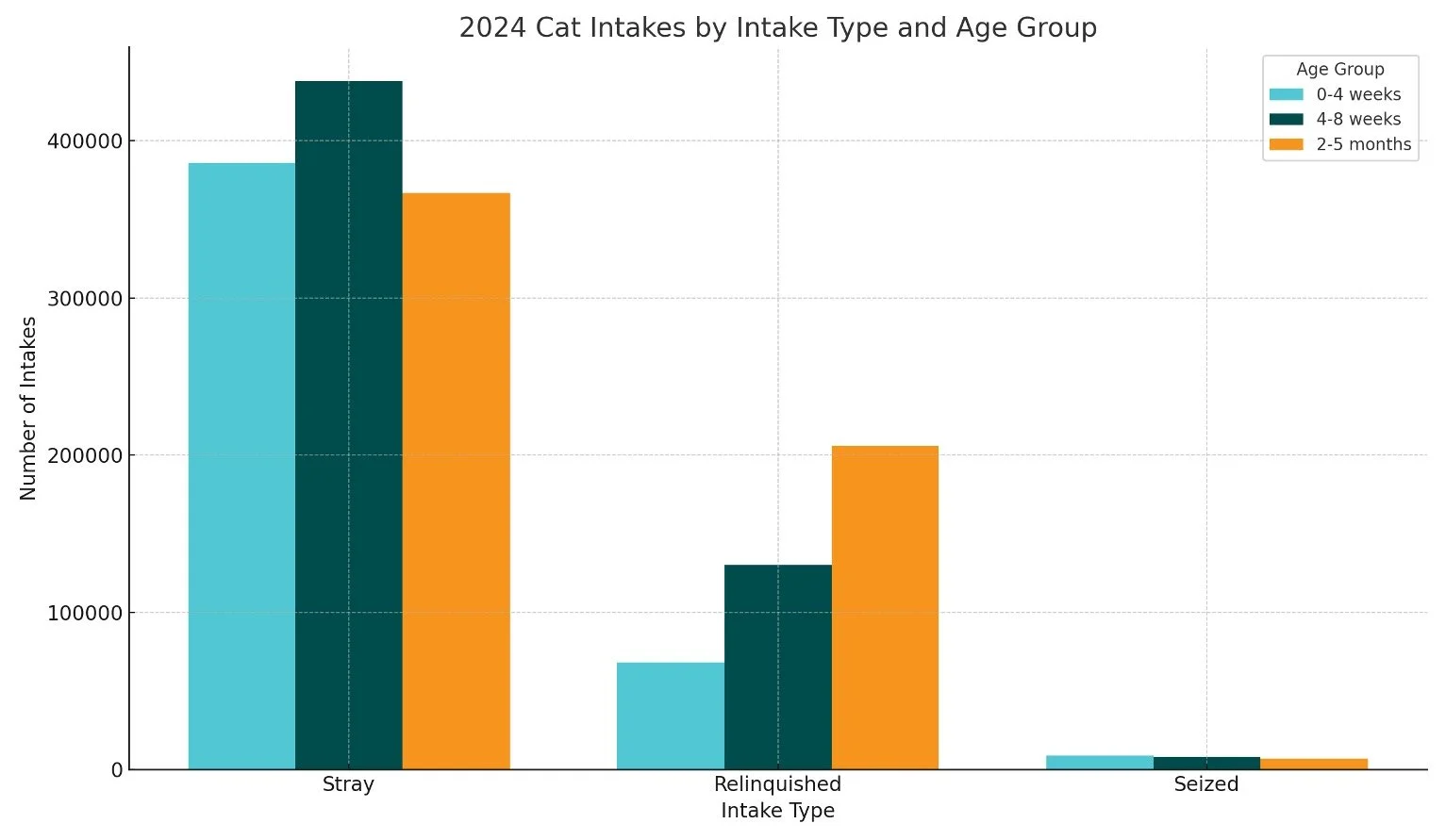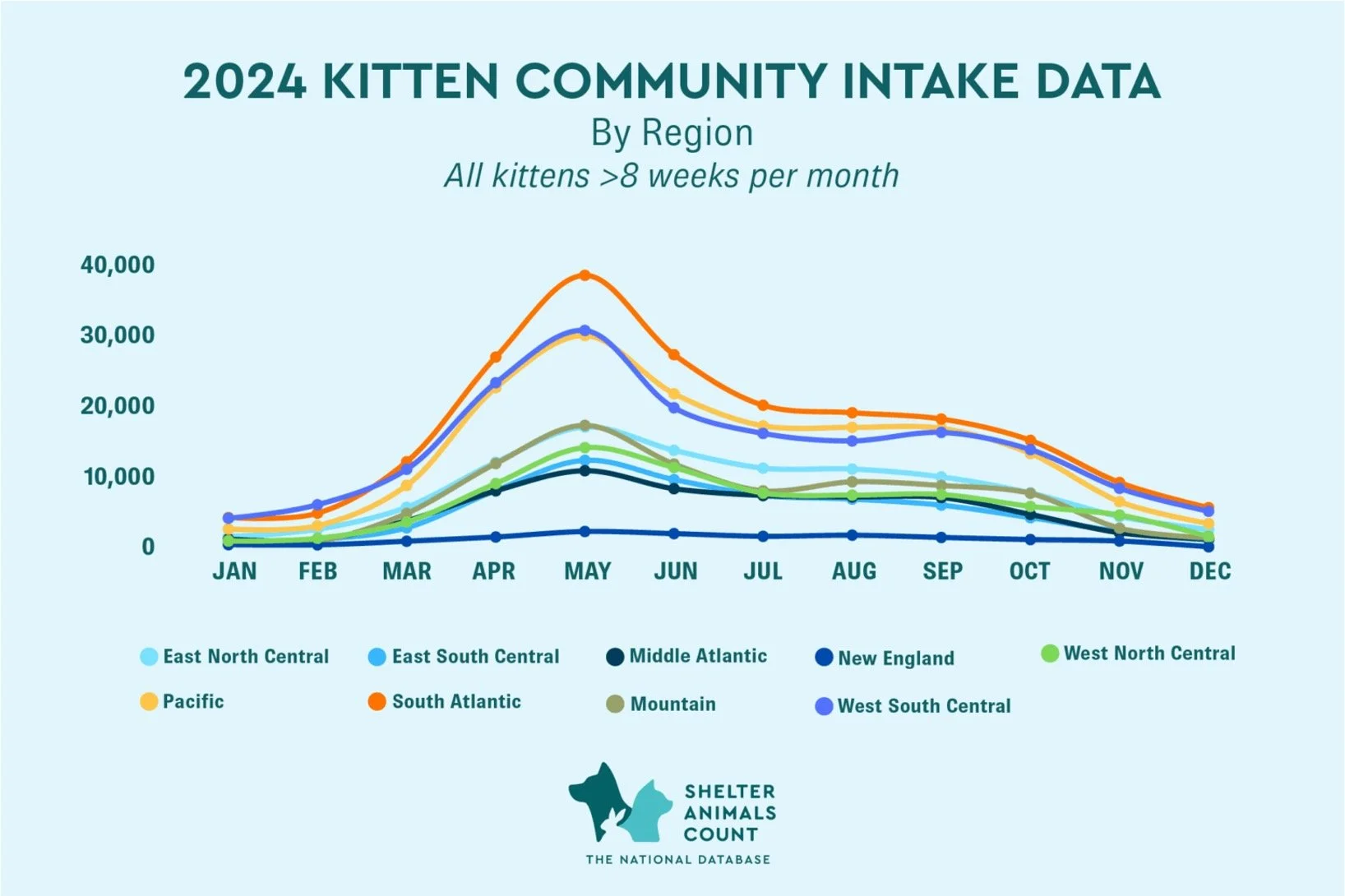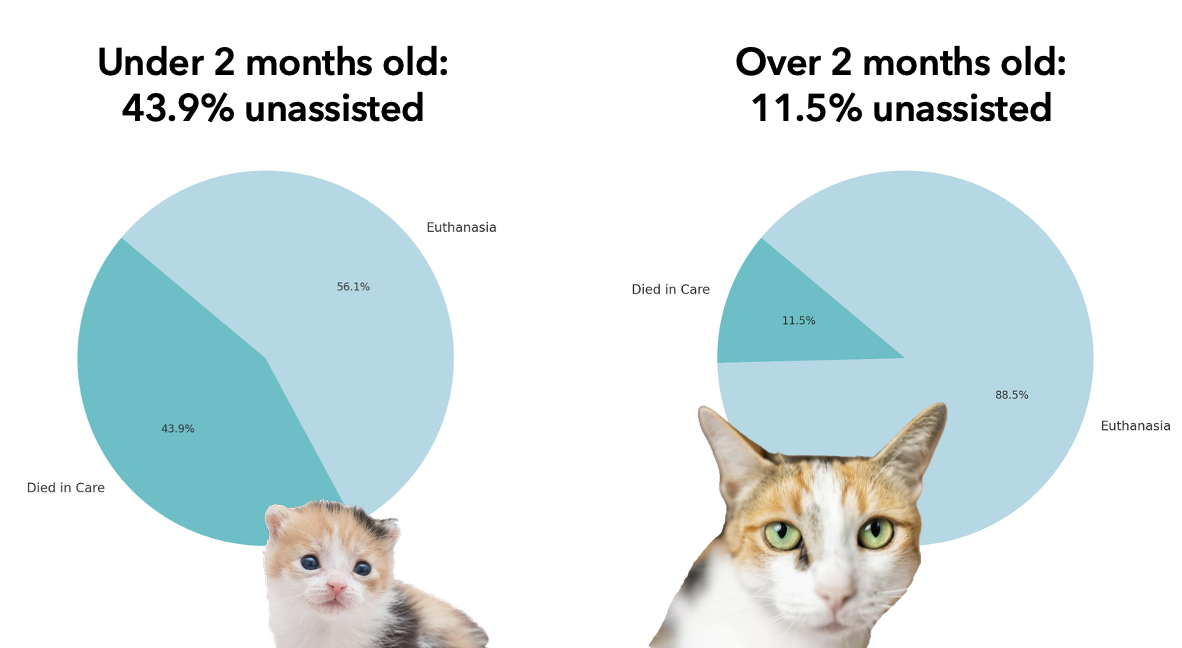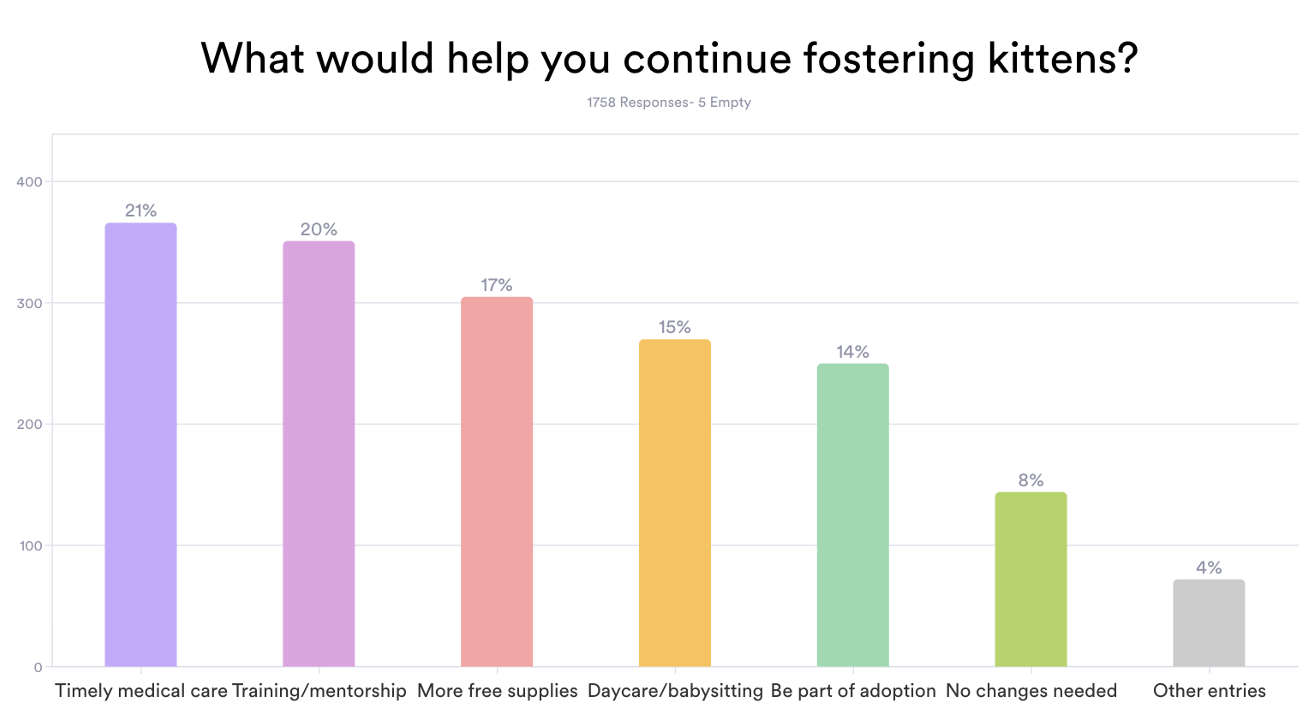Kitten Welfare Statistics
Kittens are an incredibly vulnerable population. While kittens over 8 weeks of age are among the most adopted animals, it’s kittens under 8 weeks who are sadly the most likely to die in U.S. shelters. This is due in large part to their specialized care needs, the high incidence of kittens being found outdoors and becoming separated from their mothers, and the great need for more foster homes.
In this article, I offer the most current national statistics related to kittens and their welfare. Special thanks to Shelter Animals Count and Hill’s Pet Nutrition for providing kitten-focused data for this effort.
Are you an animal welfare professional interested in understanding kitten data? Click below to watch my webinar, Making Kittens Count: Kitten Data Insights and Opportunities.
Kitten Intake Data
How many kittens enter shelters every year?
More than 1.5 million kittens entered shelters last year. Of them, over 1 million were pre-adoption age (0-8 weeks.)
When looking at total cat intakes, 15% are 0-4 weeks, 19% are 4-8 weeks, and 23% are 2-5 months.
Over half of the cats entering shelters are kittens.
Do all species experience such high numbers of babies entering shelters?
No. Cats are much more likely to enter shelters at a young age than dogs. 57% of cats in shelters are kittens, while just 29% of dogs are puppies.
Where are shelter kittens coming from?
Roughly 4 out of 5 pre-adoption age kittens (0-8 weeks) enter shelters as “stray”—meaning they were found outdoors by a community member.
Only 1 in 5 kittens entering shelters are surrendered by an “owner.”
Younger kittens are most likely to be brought to shelters from outside, with 83% of kittens under 4 weeks being surrendered as “stray.”
When is kitten season—and how bad is it?
The intake of young kittens sharply spikes with the warming weather. Nationally, kitten intake peaks in May and is lowest in January. From April through September, significantly more kittens enter shelters than adult cats.
Close to half of all intakes of pre-adoption age kittens occur between April and June.
July is the month with the highest intake of adoption age kittens.
How does kitten intake vary by region?
The region with the highest kitten intake is the South Atlantic, followed by West South Central and the Pacific.
The region with the lowest kitten intake is New England, followed by the Middle Atlantic and East South Central.
Kitten season peaks in May for every region in the United States.
Kitten Outcomes Data
How many of the cats who die in shelters are kittens?
According to the 2025 Mid-Year Report, 58% of cats dying in shelters are under 8 weeks old.
How many kittens die in shelters each year?
Close to a quarter of a million kittens died in shelters in 2024. Of them, about 173,000 were pre-adoption age.
Kittens under 8 weeks are the most likely to die in shelters of any cat population, while kittens 2-5 months are the most likely to survive.
Kittens over 8 weeks are 3 times more likely to survive than those under 8 weeks.
How are kittens dying in shelters?
Of pre-adoption age kittens who die in shelters, 56% are euthanized.
Of pre-adoption age kittens who die in shelters, 44% die unassisted. Kittens under 8 weeks are 4 times more likely to die without euthanasia than cats over 8 weeks.
What role does transfer play for kittens?
Roughly 1 in 4 pre-adoption age kittens is transferred between organizations, compared to only 1 in 10 adoption age kittens.
Kittens under 8 weeks of age are 2.5 times more likely to rely on transfer than those over 8 weeks.
Foster Survey Data
What do foster parents need?
A 2024 Kitten Lady survey found that the most pressing needs of kitten foster parents are timely medical care (21%), training/mentorship (20%), and free supplies (17%.)
Roughly 40% of ex-foster parents who stopped for reasons other than lifestyle changes reported quitting due to a lack of access to medical support.
Only 38% of foster parents report feeling that they received sufficient training from their shelter foster program.
54% of foster parents report that the shelter provides them with all the supplies they need as of 2024. 32% report receiving some free supplies, while 15% report receiving no free supplies.
What is the foster parent experience like?
55% of foster parents report that they have received kittens who were incorrectly aged.
50% of foster parents say they felt supported by the shelter after a foster kitten passed away. 32% reported feeling somewhat supported, and 18% reported not feeling supported.
What are the barriers to fostering?
The 2024 Hill’s State of Shelter Pet Adoptions found that 40% of prospective fosters are afraid they will end up adopting their foster animal. 26% said they don’t have time to foster, and 25% said they don’t have space or already have animals.
64% of prospective fosters said that if all the care expenses were covered, they’d be likely to foster.
What inspires people to foster?
A 2018 Kitten Lady Survey found that 76% of foster parents first began fostering by finding a kitten outside, while 24% signed up to foster.
Roughly 1 in 3 kitten finders are willing to foster if made aware of the risk of leaving the kitten at the shelter, and if offered training and supplies.
Changing the Future for Kittens
Interested in helping shelter kittens have better outcomes? Orphan Kitten Club is a national 501c3 nonprofit organization with a mission to build a better future for the most vulnerable kittens. Donate today to support lifesaving programs that ensure shelter kittens have the care they need to survive.
For Animal Welfare Professionals
Interested in contributing to the national data set? Visit Shelter Animals Count to submit your statistics!
Having trouble pulling data on kittens 0-8 weeks? Learn how to configure your shelter software!
Want to learn more about kittens and data keeping? Watch my webinar!







